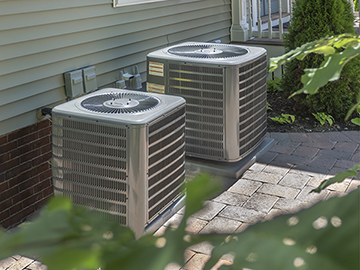Performing Proper HVAC Inspections
Pre-planning goes a long way when it comes to home care, and HVAC units should not be forgotten about until an issue arises. The best time to pay your HVAC unit some attention is when it appears to be functioning properly, and before any major changes in weather occur (fall and spring seasons). To make sure your home’s air quality and indoor temperature are in good standing, perform frequent HVAC inspections with Inspect-It 1st’s guide.
Why Should I Perform HVAC Inspections?
HVAC inspections are important for several reasons. Most obvious is the need to make sure the unit is properly functioning. Your HVAC should maintain temperatures programmed in your thermostat, and parts and mechanisms should be physically intact and functional. A fully operational HVAC system is what keeps you cool and comfortable on hot days, and warm during the cooler winter season.
It’s also important to check for problems with your HVAC unit for the sake of energy bills. A clogged or malfunctioning unit can cause energy bills to skyrocket—a frustrating consequence to an easily avoidable problem. If debris is clogging your unit, your system will work harder than necessary. Working overtime on the temperature and air quality in your home might go unnoticed at first, but will surely make an appearance on your energy bill and in your wallet.
What to Look For
Spotting basic issues with an HVAC unit can be done by assessing the system itself and exposed duct work or other pipes and vents.
HVAC System
Your HVAC system should be free of any surrounding materials such as leaves, bushes, excess dirt, or other blockages. Excess debris can compromise the effectiveness of your system, and lead to a host of other problems with the air quality and temperature in your home. The unit should also appear to be in good physical standing. Check for any rust or physical damages to any parts of the system. If you spot any issues, make a note of the areas so you can pass the information along to a professional.
Once you’ve inspected the outside of your HVAC unit, locate the air filter. Most air filters need replacing once every month. If you have a reusable filter, it will need cleaning at the same frequency. To check if your filter needs replaced or cleaned, check for any built-up dust, dirt, or other materials. If you’re using a reusable air filter, use this guide to learn how to clean it properly.
Though checking air filters is a task that is often forgotten, it is extremely important. Allowing air to pass through a dirty filter leads to that same contaminated air circulating throughout your home. Inspecting your air filter is one of the easiest and cheapest ways to maintain clean air quality in your home.
Duct Work, Pipes, and Vents
After ensuring your HVAC unit is in good standing, both inside and out, you can move on to checking the ducts, pipes, and vents. Look for any excess condensation along these areas, as this can be a sign that there is an issue with the unit. Also, make a note of any peeling tape, dirt streaks, or dents. If you can spot any of these characteristics, they are likely causing problems with the air flow in your home.
To make sure you’re getting the most out of your air flow, regularly cleaning these passages is a good practice. Dusting air vents and making sure furniture is not blocking them can help improve your air flow and quality. If you have pets, be sure to vacuum or sweep up any pet hair surrounding the vents as well.
If you want to make sure your home is ready for warmer weather, contact the experts at Inspect-It 1st! Our inspectors will perform a thorough inspection of your HVAC system to ensure everything is in working order. Find your nearest IIF office here to schedule your HVAC inspection appointment.

